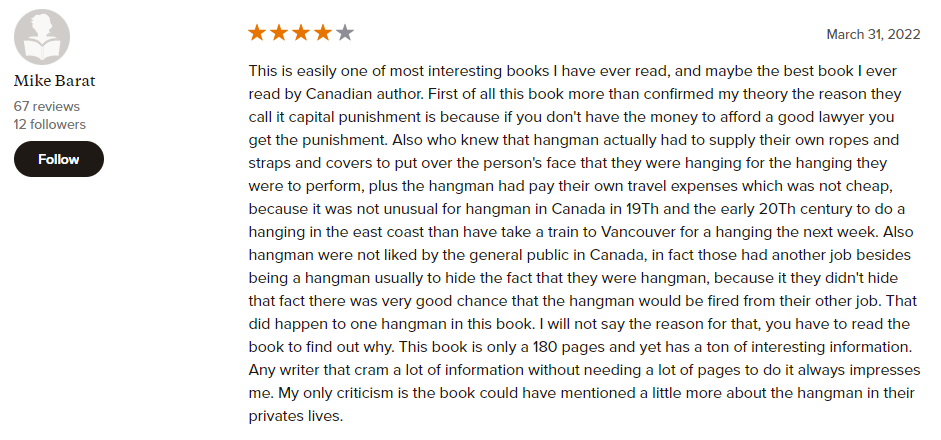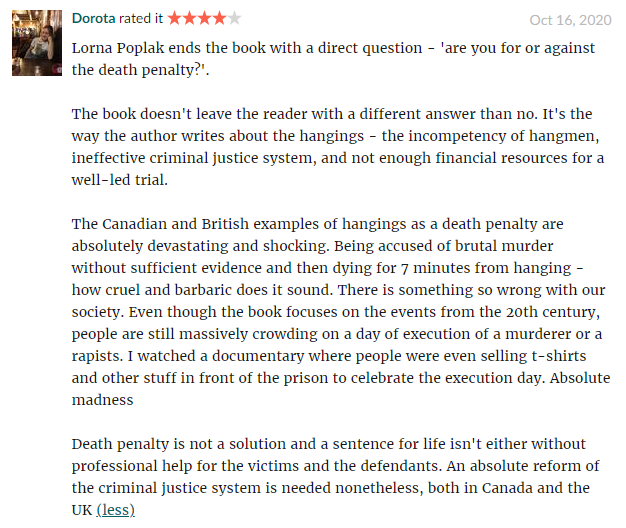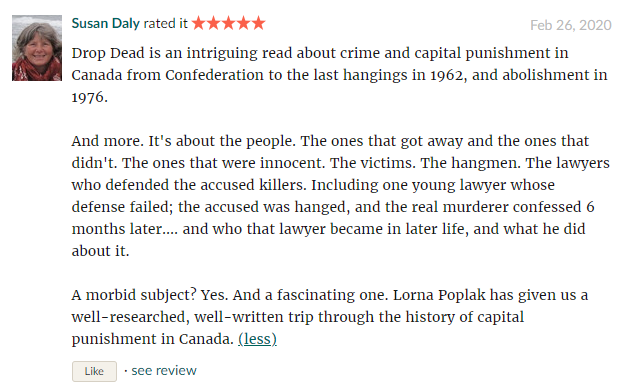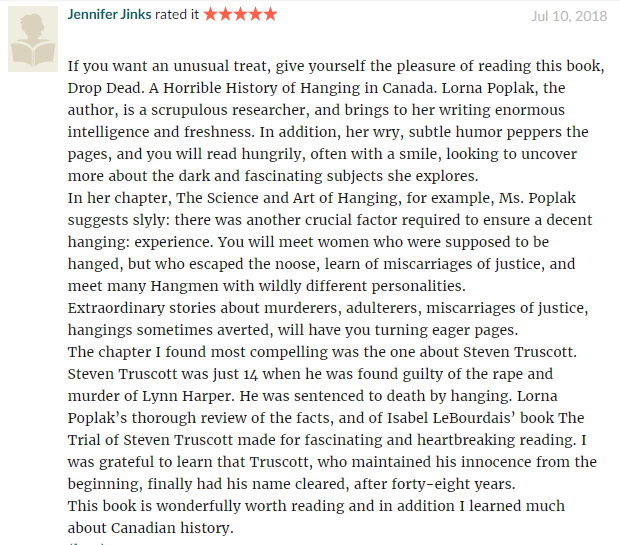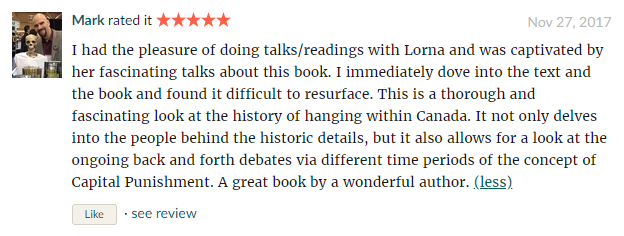Synopsis
Drop Dead: A Horrible History of Hanging in Canada explores the people and the events behind Canada's 109-year experiment with capital punishment. Told in a conversational easy-to-read voice, it's the story of alcoholic executioners, nervous sheriffs, hanging judges, wrongful convictions, unruly mobs, and even a botched execution (or two).
With many anecdotes and revealing glimpses of Canada's most famous (and infamous) historical figures, Drop Dead illustrates how crime and punishment operated in Canada's first century.
The book examines notorious cases such as the killing of Thomas D'Arcy McGee, or Louis Riel's execution for treason...as well as the crimes that made the newspaper headlines but not the history books (like the Prohibition-era gun-totin’ bootleggin’ woman who was hanged for the murder of a police officer).
Drop Dead also explores the science behind Canada's preferred method of execution. Hanging was long considered a safe and humane practice, with precise mathematical formulae and physics at its foundation. What could possibly go wrong? Quite a lot, it turns out...
For over a century, many Canadians actually celebrated hangings. But by the mid-twentieth century the public was becoming increasingly aware of the possibility, and the dangers, of wrongful convictions. Despite the fallout from the murder conviction of fourteen-year-old schoolboy Steven Truscott, it took the efforts of high profile politicians before the death penalty was abolished.
And yet, more than forty years later, we are still talking about capital punishment. When serial killers like Paul Bernardo or Russell Williams walk among us, should we reinstate the death penalty?
What's your verdict?
Goodreads Reviews
